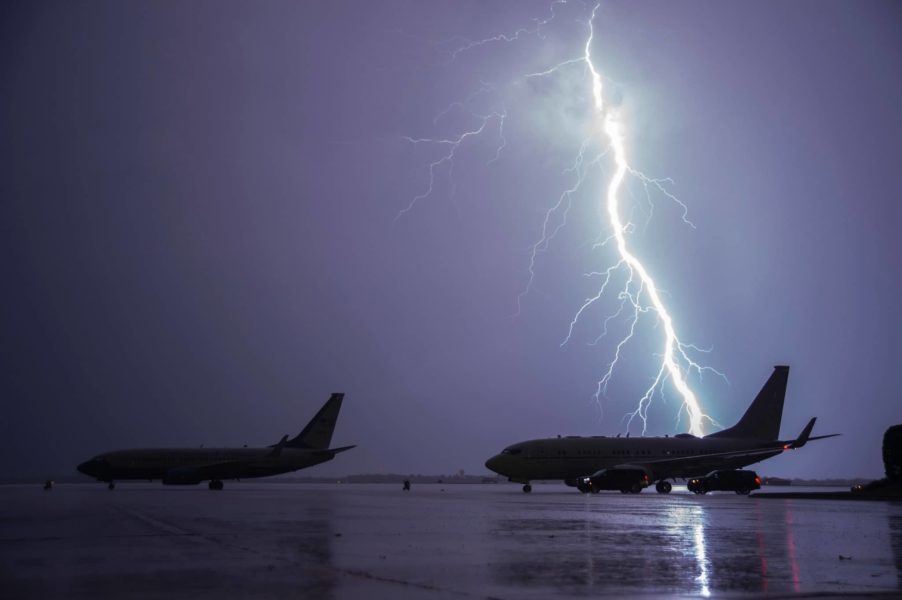Thrive
TBRPC studies threat of rising seas to MacDill Air Force Base

Situated on a low-lying strip of land jutting into Tampa Bay, MacDill Air Force Base is uniquely susceptible to extreme weather events and sea-level rise that could impede our nation’s defense readiness both at home and abroad.
In preparation for negative impacts resulting from a changing climate, the Department of Defense recently awarded the Tampa Bay Regional Planning Council (TBRPC) a Community Economic Adjustment Assistance for Responding to Threats to the Resilience of a Military Installation grant. The 18-month, $570,000 grant allows the TBRPC and its partners to examine the long-term resilience and sustainability of MacDill and the surrounding community.
Founded in 1939, MacDill Air Force Base is home to the 6th Air Refueling Wing and includes 28 associate units, including U.S. Central Command and U.S. Special Operations Command. The presence of those two unified commands creates a unique community at the base representing all branches of military service. According to a study released in March of 2021 by the American Security Project, MacDill already experiences persistent coastal erosion from higher storm surges and recurrent flooding. The Pentagon ranks the base as one of eight in the country most vulnerable to climate change.
“I think from a military standpoint in general that Hurricane Michael in 2018 was a real wake-up call, particularly what it did to some of the bases in the Panhandle,” said Sean Sullivan, executive director of TBRPC.
“I think that was a real learning case that kind of woke the military up that Florida is a great place to live, work and play, and it has a strategic location for military installations, and if we’re going to be in a flood-prone, storm-prone and hurricane-prone area, then we need to build our resiliency up so that we can withstand extreme weather events.”
Sullivan said the TBRPC is studying transportation aspects, the electrical grid, and drainage on the base. MacDill’s highest point is just 14 feet above sea level. Many areas sit on par with the water surrounding the base, making an efficient drainage system that can operate in harsh conditions a priority.
While much of the study focuses on the base’s infrastructure, Sullivan said utilities and transportation access points leading up to MacDill’s gates are just as important as those on the other side of the fence.
Sullivan explained that personnel and visitors must take city and county roads to get to and from the base. A small town with a large airport, MacDill employs 19,978 people. Factoring in employee dependents, that number jumps to 43,148. Drinking water also comes from the city, and while Sullivan believes the base has its own sewer and power generation capabilities, he said the Air Force must bring other utilities onto the property.
“We know that a significant rain event can really create a problem on base,” said Sullivan. “Particularly as it relates to transportation.”

The 18-month MacDill resiliency and sustainability study is expected to conclude in February 2023. Photo: tbrpc.org.
Sullivan said all new construction must meet resiliency standards before the federal government issues funding for the projects. The TBRPC study provides a roadmap to address vulnerabilities and an implementation strategy to strengthen resiliency. Once completed, other bases around the country, and the surrounding community, can share and adopt the study’s recommendations.
The installation review builds on previous initiatives and studies, such as an energy installation plan that assessed MacDill’s energy infrastructure in November 2019. Following that assessment, the Pentagon allocated $22 million to ensure energy infrastructure can withstand extreme weather events and sea-level rise.
The 2019 study did not directly involve the TBRPC, but Sullivan called it a good example of resilience studies becoming a prerequisite before the Department of Defense awards funding for new projects.
“It’s really a resilience process,” said Sullivan. “With this being one of the first steps.”
Sullivan noted that when forecasters project a significant storm to hit the area, base commanders must move or evacuate planes, hardware and personnel. In preparation for Tropical Storm Elsa last year, military officials moved KC-135 refueling planes to McConnel Air Force Base in Kansas. MacDill’s base commander also limited base access to mission-essential personnel.
Since that storm, the Air Force selected MacDill as the preferred location to host 24 of its next-generation refueling aircraft, the KC-46A Pegasus. In 2019, before several cost overruns, each Pegasus was valued at approximately $239.8 million. On Dec. 21, 2022, the Airforce announced that while MacDill is the preferred home of the new tankers, a final decision awaits the results of an environmental impact analysis.
Fairchild Air Force Base in Washington is considered a reasonable alternative and will also undergo an environmental impact analysis.
“So, that’s a big deal,” said Sullivan. “To me, that signals that the location is an important one to our military defense … and the value of that base is only going to be more important as we move forward.”
MacDill already provides an economic impact of $11 billion to the region. The base’s total payroll exceeds $1 billion alone. Sullivan said that economic impact is as significant, if not more so than any other entity in the Tampa Bay area.
“Therefore, not only is it important to help them become more resilient to protect our freedom, but also to protect the Tampa Bay economy,” he said. “Which is the 17th largest in America.”
Sullivan referred to the old adage of planning for the worst while expecting the best and said that planning is necessary to ensure force readiness that can deploy as needed on a moment’s notice. He said standing water could ruin runways and damage infrastructure, making a resilient drainage system mission-critical.
Sullivan said the Department of Defense (DOD) asked TBRPC to manage the region’s resiliency studies, and they are the first in the country to begin working on an installation assessment. He said the project is a community effort, consisting of representatives from the Tampa mayor’s office, the Tampa City Council, the Hillsborough County Commission and MacDill’s wing commander providing policy guidance. Several other community partners assist with technical and implementation aspects.
The initial policy advisor meeting took place in January, and the official kick-off meeting for the technical advisory is set for Feb. 17. Sullivan said the study should conclude on Feb. 28, 2023. He noted the large amount of work to complete in a short amount of time.
“I’ve been working on grants for 30 years, and this is among those with the shortest time of completion, and it has a significant amount of complexity,” said Sullivan. “But I’m confident the RPC can make this happen.”







